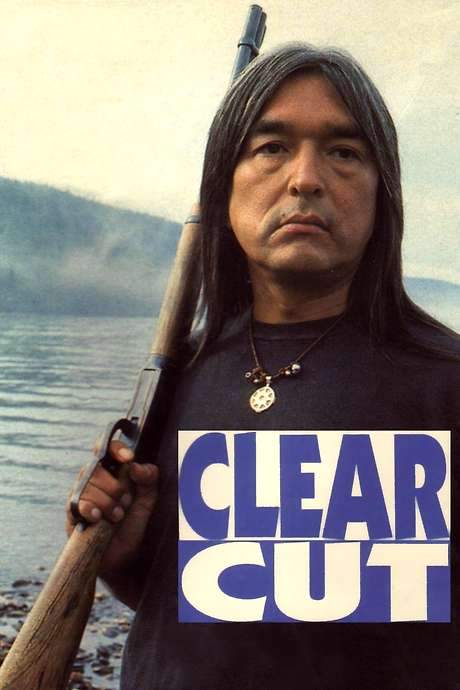
Clearcut
Year: 1991
Runtime: 98 mins
Language: English
Director: Ryszard Bugajski
When the violence erupts, a well‑to‑do white lawyer's complacent worldview is challenged by an enraged Indigenous activist. The activist forces him into a desperate plan to abduct the head of a logging corporation, hoping to make him feel the true cost of the forest’s destruction. Their uneasy alliance tests loyalty, justice, and survival.
Warning: spoilers below!
Haven’t seen Clearcut yet? This summary contains major spoilers. Bookmark the page, watch the movie, and come back for the full breakdown. If you're ready, scroll on and relive the story!
Clearcut (1991) – Full Plot Summary & Ending Explained
Read the complete plot breakdown of Clearcut (1991), including all key story events, major twists, and the ending explained in detail. Discover what really happened—and what it all means.
A seaplane carries Peter Maguire to a First Nations reserve tucked away in the forests of rural Canada, where activists have organized a long, chaotic protest to block a road that would open up Indian land to clearcutting. Maguire, serving as the native band’s lawyer, has arrived to tell them that they have lost the court case and that the logging company will begin building the road. A young girl, Polly, guides him to a dramatic scene where police are brutalizing protesters as trees are torn down. An elder of the Nation, Wilf Redwing, stoically refuses the loss and frames the struggle as a long battle. Maguire admits to doubting any real chance of reversing the decision, even as he voices a plan to appeal.
Wilf invites Maguire to a sweat lodge ceremony meant to purify and clarify his next move. The ceremony takes a dark turn as Maguire envisions cave paintings, fallen trees, and blood, and he becomes acquainted with Arthur, a militant Indigenous activist who wears a distinctive star-shaped pendant. Maguire finds himself in an uneasy camaraderie with Arthur, who jokes about drastic actions such as blowing up the mill and skinning the plant manager alive. Arthur then recruits Maguire to kidnap the logging company’s plant manager, and the four—Arthur, Wilf, Maguire, and Bud—set off through the woods with the aim of teaching Peter and Bud how to “listen to Mother Earth.”
As they travel deeper into the wilderness, Arthur’s behavior grows increasingly erratic and violent. Bud and Arthur challenge Maguire about taking a side, while Maguire wavers between loyalty to the native cause and faith in white colonial systems that have long profited from such battles. The group’s moral tensions intensify as Bud and Arthur cauterize and skin Bud’s leg. When two Mounties stumble upon the camp during a manhunt, Arthur murders them both. Wilf hints that Arthur may be Wisakedjak, an Indigenous trickster spirit known as “the Deceiver,” adding a layer of myth and doubt to the conflict.
The trio conducts another sweat ceremony, where Bud recites the Lord’s Prayer while Arthur chants his own prayer. Maguire tries to disrupt them, but both men insist on continuing. Afterward, Arthur forces Bud and Maguire to climb a mountain to show them a valley of trees and asks Bud if he can see what will be lost; Bud cannot. Maguire attempts to escape, yet Arthur seems to outpace him, almost by magic. The two struggle, and Maguire stabs Arthur with his own knife, then seizes Arthur’s nearby gun—only to discover it is unloaded. Arthur smiles enigmatically and sinks underwater, seemingly without drowning.
Eventually, all three men return to civilization and are detained by authorities. Nearby, Polly, the same girl who guided Maguire at the outset, wears Arthur’s pendant, a quiet reminder of the strange tangled fates that the protest has wrought.
Last Updated: October 10, 2025 at 16:04
Unlock the Full Story of Clearcut
Don't stop at just watching — explore Clearcut in full detail. From the complete plot summary and scene-by-scene timeline to character breakdowns, thematic analysis, and a deep dive into the ending — every page helps you truly understand what Clearcut is all about. Plus, discover what's next after the movie.
Clearcut Timeline
Track the full timeline of Clearcut with every major event arranged chronologically. Perfect for decoding non-linear storytelling, flashbacks, or parallel narratives with a clear scene-by-scene breakdown.



